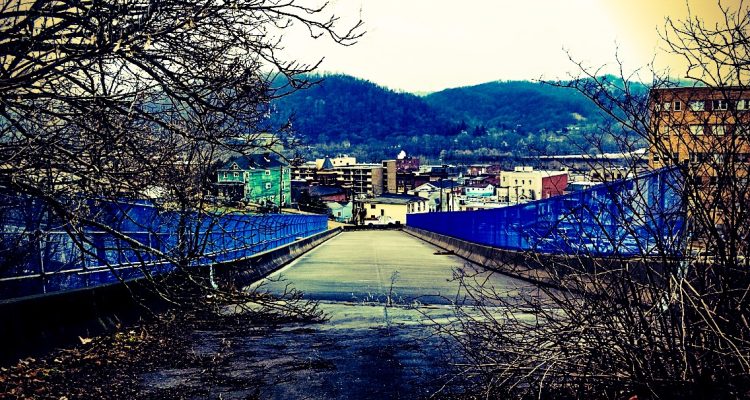It was cut into the hillside to link the village of Bethlehem to the city of Wheeling and the bridge at the bottom just might be the only span in the state of West Virginia without a pothole in its path.
The overpass is Bridge No. 3111, built during the 1980s to span W.Va. Route 2 and connect Chapel Hill Road to 22nd Street that ran adjacent to the Ohio Valley Medical Center in Center Wheeling. The roadway was constructed by the state, current District 6 interim engineer Gus Suwaid said, in the 1950s or 1960s to improve access.
The roadway’s technical title is “County Road 6,” but it was known more infamously as “Suicide Hill” because of its swerves and curves and deep drops over the hillside where Big Wheeling Creek flows at the bottom.
“But why would anyone refer to the road by that name? I’ve yet to hear a straight answer as far as why it’s been called that,” said Suwaid. “My guess is that the slope of the bridge and the hillside have caused that road to have that nickname. I guess when people drove that steep of a road, they felt as if they were putting their lives in jeopardy. That’s the only reason I can imagine.
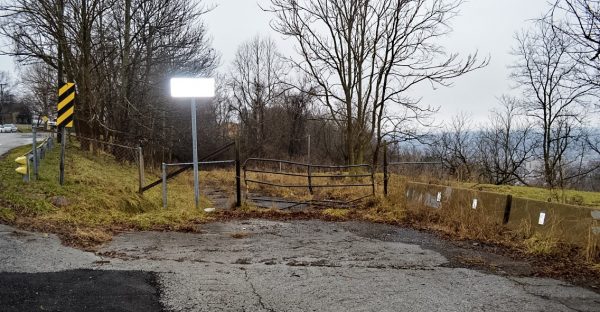
“I’m sure it was a roller coaster setting, and it was a very thin roadway, too,” he continued. “But that’s something the people who have lived here for a long time can probably answer better than I can. I’m sure there are people who still live here that used the road at some time.”
At the top in Bethlehem where the “No Trespassing” sign is posted, the roadway is blocked by fencing that is easily cleared by those wishing to visit this so-called local legend. Such a hiker is quickly met by the impacts nature has provided during the past three-plus decades, and only small patches of asphalt can be discovered during the walk.
The one-mile road runs along the hillside that overlooks the East Wheeling neighborhood before bending toward OVMC, and there are downed trees blocking the path in a few areas, and four different slip areas must be avoided for safety’s sake. The largest slide, the one that ultimately closed the passage, swept away all but a few feet of the road and gulped the guardrails once in place. The top and the bottom portions of “Suicide Hill” are the steepest areas, but the middle levels out for approximately a half-mile.
“A lot of years ago my friends and I would ride down that hill into Wheeling so we could go to McDonald’s and buy their 58-cent cheeseburgers,” recalled Bethlehem Mayor Tim Bishop. “After we got our burgers and ran around town for a while, we would go to my great aunt’s house on Eoff Street for a ride home.
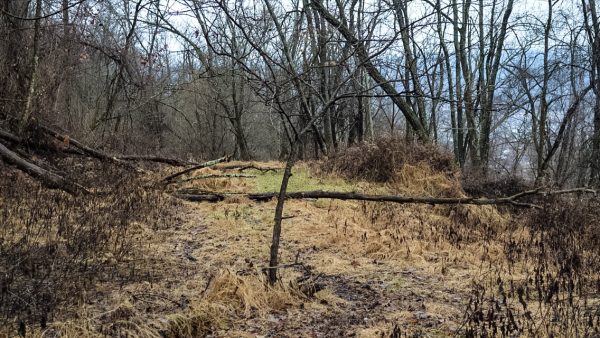
“We never peddled back up that hill because it was way too steep for us,” he continued. “I really don’t remember any of my friends trying to ride their bikes back up it because we didn’t have these bikes with 24 different gears back then. They had one gear, and it all depended on how fast a kid peddled.”
The village’s mayor has not trekked the roadway for many years, but he recalled the massive slips, and he’s been told the tales about why it was known as “Suicide Hill” during his childhood and beyond.
“I have heard those stories my entire life, but I’ve not heard a word for a really long time now,” Bishop said. “Today I know all of the those stories I heard when I was a kid were never true, but there were a lot of rumors about it, and we believed them when I was a kid. I think people just told us those to scare us but it never stopped us from riding down into town.
“One story I remember is that a school bus full of children wrecked and went over the hillside at some point. The legend was that if we climbed down the hill, we’d still be able to find the school bus,” he explained. “Of course, that was never true, and we never found the school bus, but there were a lot of accidents on it based on what I’ve been told, and I’ve also heard that there were people who went over the edge when it was open.”
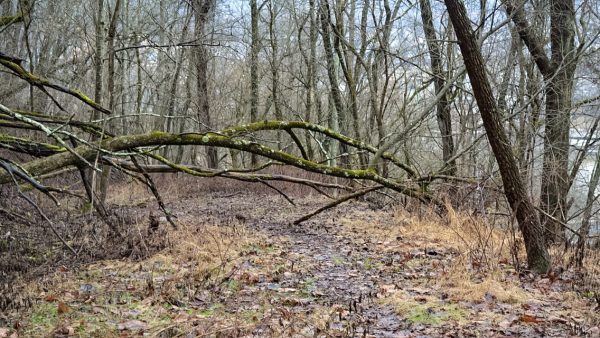
Bishop also learned those village maintenance workers made efforts to keep the roadway open to motorists.
“After I spoke to a couple of people about that road, I found out that the village used to deposit debris in the areas where the roadway had slipped because that was a big problem with that hillside,” Bishop said. “They used to place materials like concrete and things like that when that kind of work was taking place in the village, but I’m told that the practice stopped because it was a losing battle. There were too many slips, and then a really big one took place that ultimately closed the road for good.
“It’s been a lot of years since I walked down it, but I can still remember what the big slip looked like. It took out most of the road pretty close to the bottom where the bridge goes over (W.Va. Route 2),” the mayor continued. “I’m pretty sure there’s some people who travel under that bridge now who wonder where the road goes to, and they have no idea the answer is, ‘Nowhere.’”
Bridge No. 3111 appears in good condition when traveling below it and walking on its decking although the double yellow line has faded from the effects of weather. Suwaid discovered little factual information on the past project but he did research the reasons why the span was constructed.
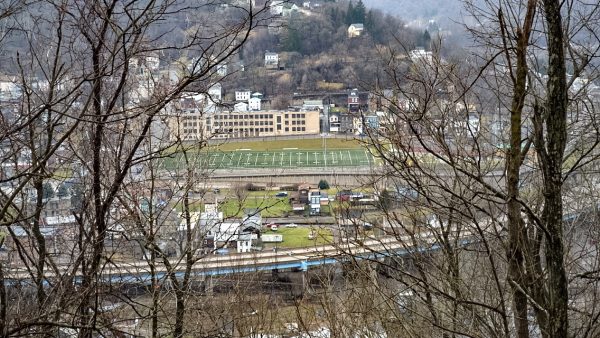
“From what the records indicate the construction of that bridge began in 1981, and from what I can tell from my research, it was built at the same time that the I-470 interchange was constructed nearby,” Suwaid said. “It was a part of the project that included the exit ramp down to 16th Street in downtown Wheeling. Before (W.Va. Route 2) was built, this road continued down the hillside all the way to Chapline Street next to the hospital.
“The bridge was built for the access because the new road took away the hillside,” he continued. “From my research I found out that, because of the multiple slips that took place along that road, it was decided not to open that bridge to traffic after it was completed.”
Or was it?
Suwaid has encountered a few people who have insisted the span briefly welcomed motorists.
“I have been told by a few people who believe it was opened for about three months, but then it was closed because of the road up that hill was pretty much slipping away,” Suwaid reported. “But the prevailing story is that it was never opened to traffic, so this is actually something I’ve not been able to verify, but I am sure there are people in this community that know whether it was opened or not.
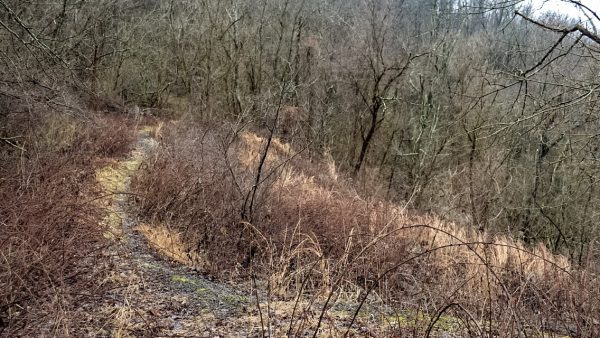
“Most of the opinions I have collected is that it was never opened,” he said. “The bridge is in great shape, and the decking is in very good condition, but the design of that bridge is not something we would choose today because, over the years, it’s proven to be fracture critical. What that means is the design is not a good one for today’s traffic.”
How much did this “Bridge to Nowhere” actually cost West Virginia taxpayers? Suwaid only can offer the price tag such an overpass would possess today.
“If a bridge like that was built today it would cost between $3 million and $6 million depending on the foundation work and aspects like that,” the interim district engineer offered. “As far as what it cost back then, I do not have those numbers to offer anything official but inflation rates can be calculated.”
According to the Consumer Price Index provided by the federal government, $6 million in today’s economy would have been worth approximately $2.25 million in 1981. Despite the span’s good condition, Suwaid owns no plans to consider renovations to Chapel Hill Road, so the bridge will remain closed for the foreseeable future.
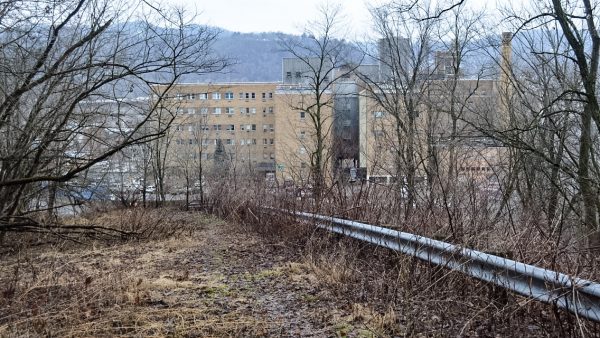
“I do not see a need to re-address that roadway to increase access because since that road was closed I-470 has been added to that area and that’s how the people now access the areas on that hilltop,” Suwaid said. “Plus, there have never been any businesses or residences along that roadway so that is not part of the equation, too.
“That’s why it’s not feasible to put any money into it to re-do it and maintain it,” he continued. “If that changes at some point then we can have that conversation, but with all of the prior slips and the past efforts to prevent those slips, I seriously doubt anyone would want to build another on that hillside because it’s proven to be fairly unstable through the years.”
And no, Bridge No. 3111 cannot be removed for use at another location.
“I’ve never heard of such a proposal, and I seriously doubt it could be removed from its foundation because it is embedded into the rock of that hillside,” Suwaid explained. “That’s pretty hard to even imagine, and it really seems as an unachievable goal. Most bridges are designed with the specific location in mind because every bridge is different.
“Plus, that bridge was constructed at a 12.5-percent grade because of the steepness of that hillside, and I doubt there is another location where a 12.5-percent-grade bridge would make sense,” he continued. “I wish it were possible, but it’s not.”
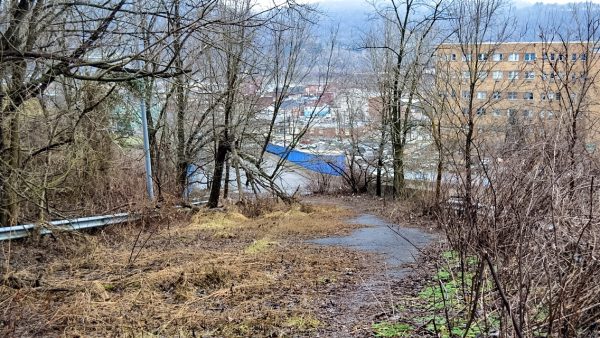
As far as Bishop is concerned, “Suicide Hill” has been forgotten by area residents because of the amount of time that’s passed since its closure. After viewing photographs of the passage’s current condition, Bethlehem’s mayor doubts a child could navigate a mountain bike from top to bottom today.
“Since I was elected as mayor not a single resident of Bethlehem has come to me about that road,” Bishop said. “No one has ever proposed an idea about what to do with it. I think it’s been closed for so long now that most of the people who live here now have forgotten it even exists. Today there’s an entire generation that’s driving now, and that road has never been an option for them.
“I know when I drive out Chapel Hill and Hubbard Lane, I don’t even look at the gate that blocks it from traffic. It’s just there,” he continued. “I’m sure some people go down there with their dogs or to try to take photos of Wheeling because the views are great when the trees aren’t full of leaves in the spring and summer.”
However, if residents expressed interest or if an organization proposed a future-use idea, Bishop admitted he would be intrigued by such a conversation.
“I’d be willing to listen to any and all ideas for using the path for something again, but I seriously doubt it will ever be a roadway again because of the slips,” he said. “But if someone wants to talk about making it a hiking trail or a bike route or something like that, I’d be open to discuss it and to see what our residents think about the idea.
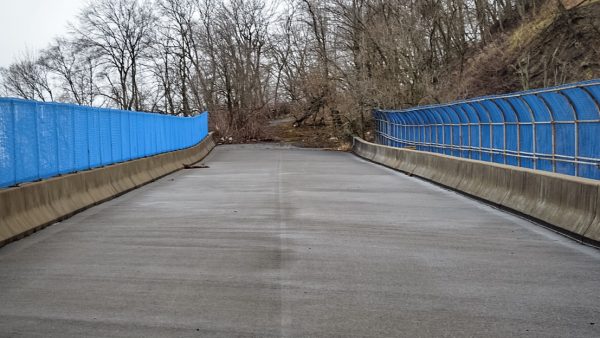
“Since it is pretty steep whether you’re going up it or down it, there could be a need for a rest shelter and water along the route, and those are ideas that we can talk about,” Bishop continued. “I’d be very curious to see if people would be interested and if they would make it part of what they do for physical fitness.”
Suwaid, too, would listen, and that is because similar projects have been proposed and accomplished in several areas of the Mountain State. State funds, though, would not be made available for any portion of such a project.
“Re-purposing old roadways for other uses is something that we have done throughout the state of West Virginia, so it’s not impossible. If that’s a conversation concerning this roadway then we would have to take a hard look at it because of the history with slips and slides,” Suwaid said. “But if a group comes in and they are willing to do the work that is necessary to ensure safety, I’m sure it’s something we would consider.
“Such a group would work with our Planning Division so an assessment could be conducted so we can see what’s really possible,” he said. “If everyone is satisfied from the engineering standpoint and such a group would be willing to take ownership of such a trail as far as upgrades and maintenance are concerned, it is something that could provoke a lot of interest in the future. Maybe if something like that happens people will then call it something different than ‘Suicide Hill.’”
(Photos by Steve Novotney)


